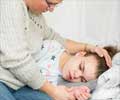
‘Seizures affect kids throughout their entire life and have significant impact in their normal development.’
Tweet it Now
Papadelis and his team used noninvasive techniques and advanced computational methods to measure the electric and magnetic signals generated by neural cells in the human brain and identify functional networks that are responsible for the generation of seizures in children suffering from epilepsy. This new method identifies those functional networks with high precision.
Epilepsy in Kids
“This could benefit so many children who can’t control epilepsy with drugs, which represents between 20 and 30% of children suffering from epilepsy,” said Papadelis, who also serves as the director of research in the Jane and John Justin Neurosciences Center at Cook Children’s Health Care System.Currently, Papadelis said, epilepsy surgery is the safest and most effective treatment for these patients since it offers a 50% chance of eliminating seizures.
“The test we developed pinpoints exactly where the epilepsy network is occurring. Currently, there is no clinical exam to identify this brain area with high precision,” Papadelis said.
“Successful treatment of epilepsy through surgery or laser ablation early in life would provide an improved outcome for these children since their brains possess extensive neural plasticity and can recover after surgery better than adult brains. This would help the children live seizure-free and have less comorbidities from epilepsy.”
Epilepsy is a common neurological disorder affecting about 3.4 million people in the United States. Of those, about 470,000 are children, or about one of every 100 children in the U.S. Children with uncontrolled seizures are at increased risk for poor long-term intellectual and psychological outcomes, along with poor health-related quality of life.
Advertisement
Source-Eurekalert














